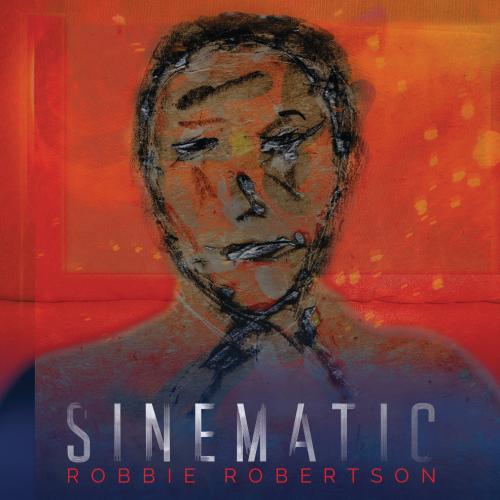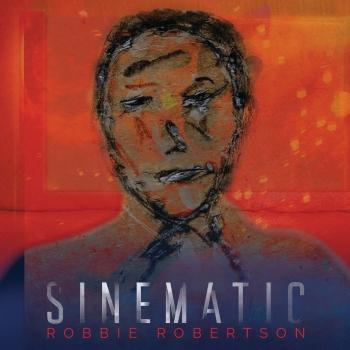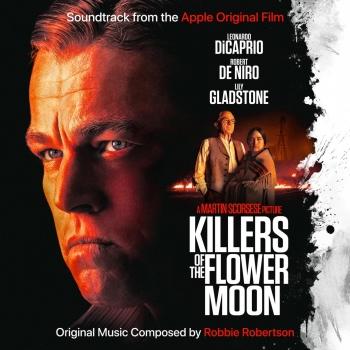
Sinematic Robbie Robertson
Album info
Album-Release:
2019
HRA-Release:
20.09.2019
Album including Album cover
I`m sorry!
Dear HIGHRESAUDIO Visitor,
due to territorial constraints and also different releases dates in each country you currently can`t purchase this album. We are updating our release dates twice a week. So, please feel free to check from time-to-time, if the album is available for your country.
We suggest, that you bookmark the album and use our Short List function.
Thank you for your understanding and patience.
Yours sincerely, HIGHRESAUDIO
- 1 I Hear You Paint Houses 05:03
- 2 Once Were Brothers 04:25
- 3 Dead End Kid 03:59
- 4 Hardwired 03:59
- 5 Walk In Beauty Way 05:38
- 6 Let Love Reign 05:12
- 7 Shanghai Blues 03:51
- 8 Wandering Souls 02:34
- 9 Street Serenade 05:06
- 10 The Shadow 04:27
- 11 Beautiful Madness 04:30
- 12 Praying For Rain 04:12
- 13 Remembrance 05:29
Info for Sinematic
Sinematic is an enthralling set of songs that explore the darker corridors of human nature. The 13 song collection, is his first since 2011’s How To Become Clairvoyant and themes sprang from his recent film scoring for Martin Scorsese’s organized crime pic, The Irishman and his forthcoming documentary Once Were Brothers: Robbie Robertson and The Band. The album features guest stars such as Van Morrison, Glen Hansard, and many more.
For his new album, Robertson drew inspiration from his recent film score writing and recording for director Martin Scorsese's eagerly anticipated organized crime epic "The Irishman," as well as the forthcoming feature documentary film, "Once Were Brothers: Robbie Robertson and The Band," based on his 2016 New York Times bestselling memoir "Testimony." The documentary will celebrate its world premiere on Thursday, September 5 as the Opening Night Gala Presentation for the 44th Toronto International Film Festival.
Today, Robertson provides the first glimpse of Sinematic with the release of the album's opening track, "I Hear You Paint Houses," available now for streaming and as an instant grat download with digital album preorder. Drawn from Scorsese's film and the book it's based on, Charles Brandt's "I Heard You Paint Houses" about confessed hit man Frank "The Irishman" Sheeran, the song is a riveting duet with Van Morrison that features bright guitar and a blithe tone that belies its chilling lyrics. Mob code for hiring a hit man, painting houses refers to spattering walls with blood. Opening with Robertson's devilish invitation, "Shall we take a little spin/To the dark side of town?," the opening track sets the album's stage for more gripping tales of villainy and vice and powerful stories about destruction and despair.
"I was working on music for 'The Irishman' and working on the documentary, and these things were bleeding into each other," says Robertson of the impetus for Sinematic. "I could see a path. Ideas for songs about haunting and violent and beautiful things were swirling together like a movie. You follow that sound and it all starts to take shape right in front of your ears. At some point, I started referring to it as 'Peckinpah Rock'," a nod, Robertson says, to Sam Peckinpah, the late director of such violent Westerns as "The Wild Bunch."
Narrated in Robertson's cool parched croon, the yarns unspool over his vibrant guitar stylings and a bedrock of moody, midtempo rock, anchored on most tracks by bassist Pino Palladino (John Mayer Trio, The Who), drummer Chris Dave (D'Angelo, Adele), and keyboardist Martin Pradler, who also mixed the record. The band is rounded out with Afie Jurvanen, who provides guitar and backing vocals, along with vocalist Felicity Williams, a regular collaborator with Jurvanen in his band Bahamas. Robertson is joined on the album by special guest vocalists Van Morrison, Glen Hansard, Citizen Cope, J.S. Ondara, and Laura Satterfield; musicians Jim Keltner, Derek Trucks, Frédéric Yonnet, and Doyle Bramhall II; and producer Howie B who provides throbbing electronic textures to several tracks.
On "Dead End Kid," one of Sinematic's many standouts, Robertson turns the lens inward as he recalls some of the obstacles and low expectations he faced as a youth as a member of a First Nation and Jewish gangster family. Wielding his guitar like a dangerous weapon, he demonstrates the breathtaking playing skills that caused a frenzy on Bob Dylan's notorious 1966 electric tour and that helped to birth the Americana genre. Robertson's defiant lyrics recall his teenage dream to play his music around the globe: "I want to show the world/Something they ain't never seen/I want to take you somewhere/You ain't never been." Robertson's raspy vocal is perfectly complemented by Glen Hansard's soulful, soaring voice. The acclaimed Irish vocalist of The Frames, The Swell Season, and star of the film "Once," Hansard resurfaces on Sinematic's spirited rocker "Let Love Reign," inspired by John Lennon's call for peace.
Throughout the album, Robertson takes listeners through a colorful tour of society's seedy underbelly. "Shanghai Blues" is a vivid saga examining China's notorious Green Gang mobster Du Yuesheng, who dominated opium, gambling and prostitution operations in the early 20th century. More crime and mystery unfold in the moody "Street Serenade," which Robertson calls a "sinphony." The edgy, electronic "The Shadow" is a nostalgic homage to Orson Welles' entrancing radio crime drama.
Robertson's guitar playing takes center stage on two instrumental tracks, "Wandering Souls" and the album's string-laden closer, "Remembrance," written for his late friend, Microsoft co-founder and music lover Paul Allen. Robertson enlisted Allen's guitar heroes Derek Trucks and Doyle Bramhall II, plus drummer Jim Keltner, for the grand and melancholy elegy.
While many of the songs on Sinematic focus on sinful themes far removed from Robertson, he draws from his own extraordinary life story for the track "Once Were Brothers," a bittersweet reflection on The Band, written for the new documentary of the same name. Robertson is joined on the track by Nairobi native J.S. Ondara and American singer/songwriter Citizen Cope. Mournful strains of a harmonica and organ play as Robertson relates The Band's farewell, singing "Once were brothers/Brothers no more." Of the song, Robertson says, "There is war and conflict involved. Writing it hurt inside sometimes, but those experiences can be rewarding in the emotional outcome. It hurt but I loved it."
Inspired by Robertson's acclaimed 2016 autobiography, "Testimony," director Daniel Roher's "Once Were Brothers" documentary explores Robertson's young life and the creation of The Band, one of the most influential groups in the history of popular music. The compelling film blends rare archival footage, photography, iconic songs, and interviews with many of Robertson's friends and collaborators, including Martin Scorsese, Bruce Springsteen, Eric Clapton, Van Morrison, Peter Gabriel, Taj Mahal, Dominique Robertson, and Ronnie Hawkins. Made in conjunction with Imagine Documentaries, White Pine Pictures, Bell Media Studios, and Universal Music Canada's Shed Creative, the project is executive produced by Martin Scorsese; Imagine Entertainment chairmen Brian Grazer and Ron Howard; Justin Wilkes and Sara Bernstein for Imagine Documentaries; White Pines Pictures' president Peter Raymont, and COO Steve Ord; Bell Media president, Randy Lennox; Jared Levine; Michael Levine; Universal Music Canada president and CEO Jeffrey Remedios; and Shed Creative's managing director Dave Harris. The film is produced by Andrew Munger, Stephen Paniccia, Sam Sutherland, and Lana Belle Mauro.
Robbie Robertson, vocals, guitar
Pino Palladino, bass
Derek Trucks, guitar
Frédéric Yonne, guitar
Doyle Bramhall II, guitar
Jim Keltner, drums
Chris Dave, drums
Van Morrison, vocals
Glen Hansard, vocals
Citizen Cope, vocals
J.S. Ondara, vocals
Laura Satterfield, vocals
Howie B., DJ, producer
Martin Pradle, keyboards
Felicity William, vocals
Afie Jurvanen, guitar, backing vocals
Robbie Robertson
has a long history as an American popular music innovator, and he was one of the premier songwriters of the rock era of the late 1960s and early 70s. Born in Toronto, Canada, the son of a Jewish father and Mohawk mother, Robertson was exposed to Native music and country music as a child. He learned guitar and wrote songs from an early age, and in 1958 at the age of 15 joined the Hawks, the backup band for rockabilly star Ronnie Hawkins. Robertson and the Hawks stayed with Hawkins until 1963, when they began working on their own and soon came to the attention of Bob Dylan. He hired them as the supporting band for his legendary 1965–1966 world tour, when he literally “electrified” the folk and rock worlds by going electric. Robertson and his band mates—Levon Helm, Rick Danko, Garth Hudson, and Richard Manuel—quite literally provided the electricity for Dylan’s influential new sound.
Robertson and the other musicians subsequently renamed themselves “The Band” and became one of rock’s seminal acts. They made a series of influential records, starting with 1968’s Music From Big Pink and the following year’s masterpiece, The Band. Many of The Band’s best songs—most written by Robertson—featured evocative examinations of American mythology and lore. The Band dissolved on Thanksgiving Day, 1976 following an all-star concert filmed by director Martin Scorcese and later released as The Last Waltz. The film was re-released in 2002 and is considered one of the great rock performance films and documentaries of the era.
After the breakup of The Band, Robertson pursued a successful career in the 1980s, writing film scores for such films as “Raging Bull” (1980), “King of Comedy” (1983), and “The Color of Money” (1986). He also produced and starred in a film called “Carney” (1980) which featured Jodie Foster and Gary Busey. Robertson returned to making albums in 1987 with a self-titled solo album, and in 1990 with an album about New Orleans called Storyville.
In 1994, Robertson returned to his roots, teaming up with a number of talented contemporary Native American artists loosely called “The Red Road Ensemble” to produce an album for a television documentary series. The album, Music for The Native Americans, was a milestone, for it brought to light for a mass audience a new musical genre: contemporary Native American music. The album allied Robertson’s considerable songwriting, production, and performance talents with the work of several other prominent Native American artists, including female vocal trios Ulali and Walela, performers Jim Wilson, Dave Pickell, and Douglas Spotted Eagle, and a Canadian First Nations band called Kashtin.
This album contains no booklet.








